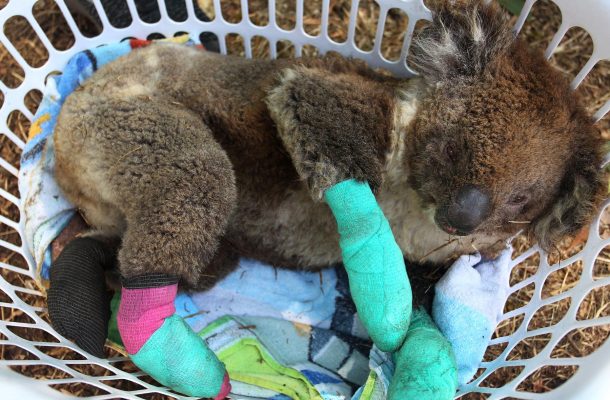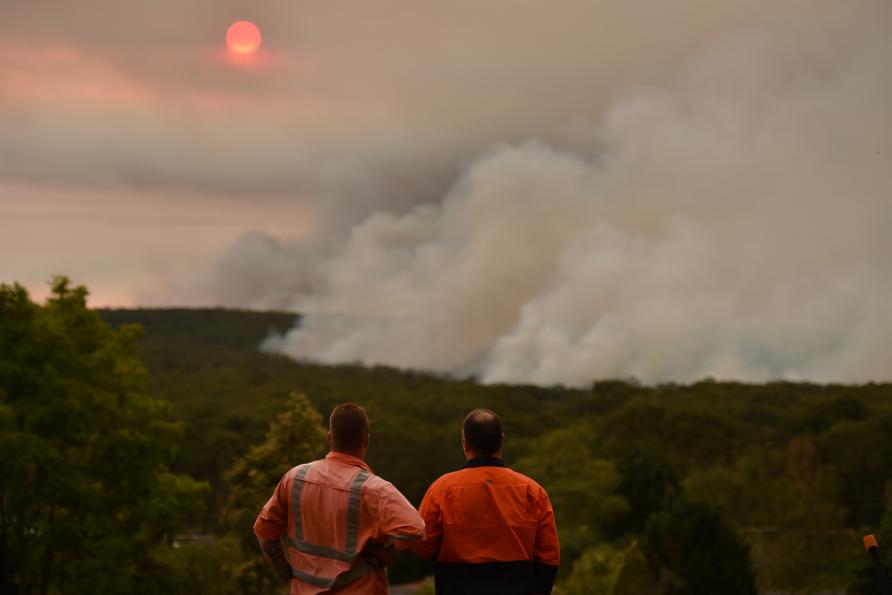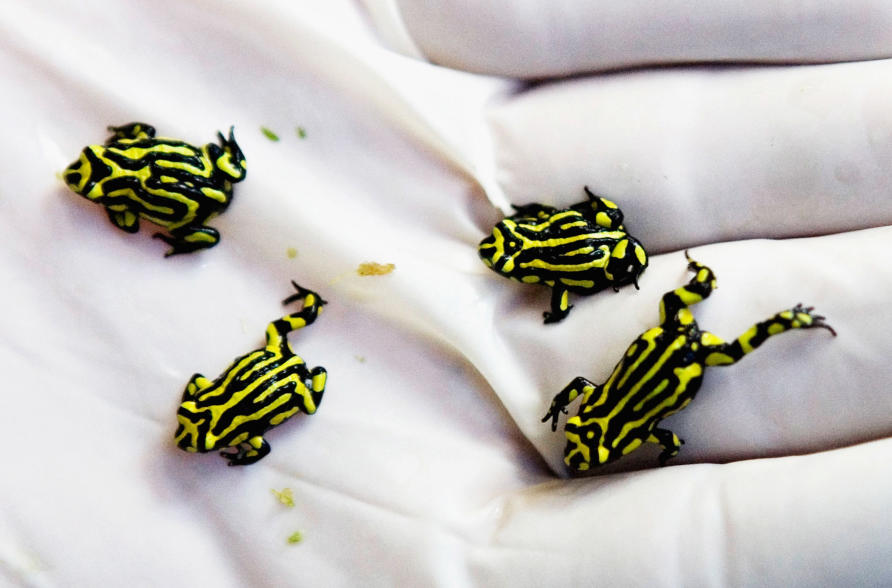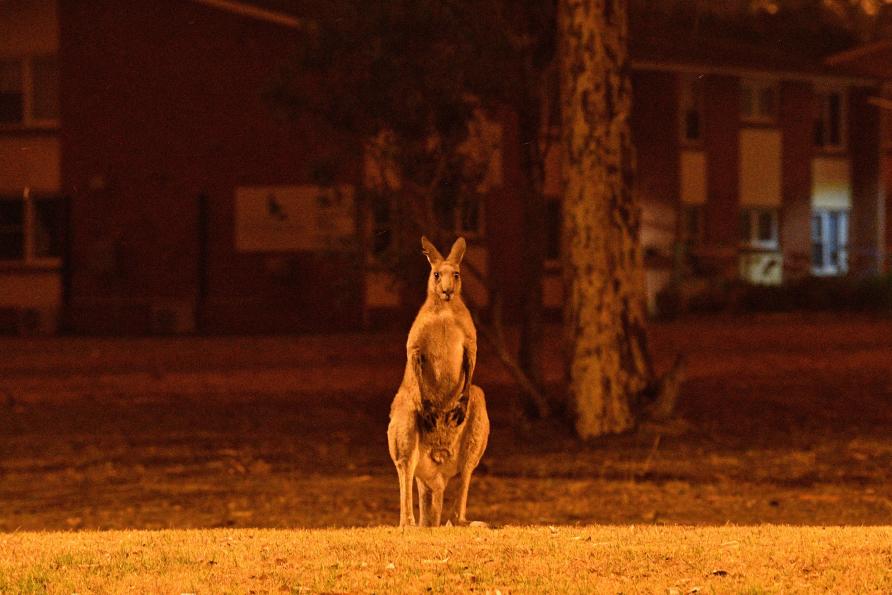Helping our wildlife bounce back

Australia has a long evolutionary history of fire, and its plants and animals have developed many strategies to cope with occasional fire events. Plants, for example, might resprout from structures below ground or be protected by thick bark, or be able to regenerate from seed stored in the soil or protected by woody capsules.

The massive scale of Australia’s bushfires pose a greater danger to wildlife populations. Picture: Fires at Bargo, 150km southwest of Sydney, 19 December 2019.
But animals have to rely on their mobility. Many can fly, hop or run to unburnt areas, while others might take shelter in burrows or hollow logs, or climb trees to escape the flames.
So, how worried should we be about the wildlife impact of the fires?
One of the lessons learnt from the 2009 Black Saturday fires in Victoria was that even extreme bushfire events vary in their severity across the landscape. Within the overall burnt area, there are patches that are less affected, like moist gullies and in rocky terrain, and these patches can often provide refuges for animals to shelter in.
After the fire, as the bush recovers, animals can move out to find new areas to live or take advantage of the new food resources in the recovering landscape, like new vegetation that can be very palatable and has yet to develop defences. Burnt areas can also leave many seeds on the ground and predators will benefit from prey having less cover. Animals in other areas of the landscape not directly affected can also move in to take advantage of these new resources.
But the massive extent of these current fires means the impact on wildlife will likely be worse than what we’ve experienced in recent times.
It is highly likely that there will still be unburnt refuges within individual fires, although how many animals have survived is unknown. Of greatest concern is the lack of large unburnt areas to provide a source of animals to recolonise the regenerating landscape.
The fires have also been so extensive that many populations of particular species will have been severely reduced and will take many years to recover.

Bushfires can threaten already endangered species like the tiny Corroboree Frog, here pictured on a keeper’s gloved hand at Taronga Zoo in Sydney.
We also know that when they lose vegetation to shelter in many small mammals, like bandicoots, the agile antechinus and the bush rat, will face a heightened risk from introduced predators like foxes. Recent research has demonstrated that these predators are often attracted to recently burnt areas.
So, will any species be in danger of extinction?
It is inevitable that there will be reductions in populations in some parts of the landscape and some local extinctions; this is not unusual during bushfires.
Species at greatest risk of total extinction are those with small, isolated populations, like the visibly spectacular and critically endangered Southern Corroboree Frog. There are probably only 50 adult frogs left in the wild, with their home in the Snowy Mountains, which is threatened by several converging fires.
Fortunately, we have an insurance policy, with captive breeding programs at several institutions in NSW and Victoria.
The future survival of this and other rare iconic species may depend on future reintroductions once their fragile habitat has recovered.
Increasing habitat loss and fragmentation due to land clearing and urban expansion in eastern Australia has meant that animal populations are increasingly becoming isolated from each other. This places certain species at greater risk of extinction when widespread environmental events occur, like the current bushfires.

Habitat loss and climate change will make wildlife more vulnerable to fire threats. Here, a kangaroo shelters from bushfires in a residential area of Nowra, New South Wales on 31 December 2019.
If we are to reduce this risk we need to slow the rate of habitat destruction and ensure appropriate planning strategies are put in place.
And some ecologies are particularly fragile. In many fire-prone Australian landscapes there are unique relationships between plants and their pollinators. Certain groups of orchids, for example, rely on just one family of wasps to pollinate them – these orchids mimic female wasps to attract males. But wasp populations are vulnerable to fires.
It means larger and severe fires like the current ones are likely to disrupt this relationship, with long lasting impacts on both plant and animal communities.
Pollination is an essential ecosystem service, with the relationship between fire and many pollinators, whether insects, mammals or birds, poorly understood.
The scale and magnitude of these fires is consistent with predictions derived from climate change modelling and we can expect to see more frequent, severe and extensive fires in the future. This will increase the risk of extinction among certain species.
The decline of local populations of particular species due to habitat isolation and loss, and the increased frequency of extreme environmental events like fires, does not bode well for the future.
It means the long-term survival of our iconic wildlife is likely to require greater levels of human intervention to protect and foster vulnerable populations.
While we hear frequent calls for greater fire fighting resources, we will also need more resources for monitoring and safeguarding the well-being of our unique animals.
This article was published by Pursuit.
Professor Alan York leads the Fire Ecology and Biodiversity research program in the School of Ecosystem and Forest Sciences at the University of Melbourne. His research group investigates how fire causes patterns in the landscape, and how plants and animals respond to these disruptions.











